Many drivers face it, and understanding the reasons behind it can make all the difference. In this guide, we’ll delve into six potential causes for Why Your Car Has No Power, from simple maintenance oversights to more complex mechanical issues. Whether you’re a gearhead or simply someone who wants to feel confident in their vehicle’s performance, these insights will help you navigate through any loss of power with ease.
Imagine cruising down the highway, ready to overtake a slow-moving vehicle in front of you, only to realize that your car lacks the necessary oomph. It’s an exasperating scenario that can put a damper on any road trip or commute.
6 Reasons Why Your Car Has No Power
1. Dead or Weak Battery
If you find yourself stranded with a dead or weak battery, it could be a sign that your car’s power source is reaching the end of its lifespan. The typical car battery lasts between 3 and 5 years, but numerous factors can affect its longevity.
Extreme weather conditions, frequent short trips, and leaving lights or electronics on when the engine is off can all contribute to a shorter battery life. It’s important to pay attention to warning signs such as slow engine cranking, dim headlights, or clicking sounds when trying to start the car. These indicators may signal that it’s time for a new battery.
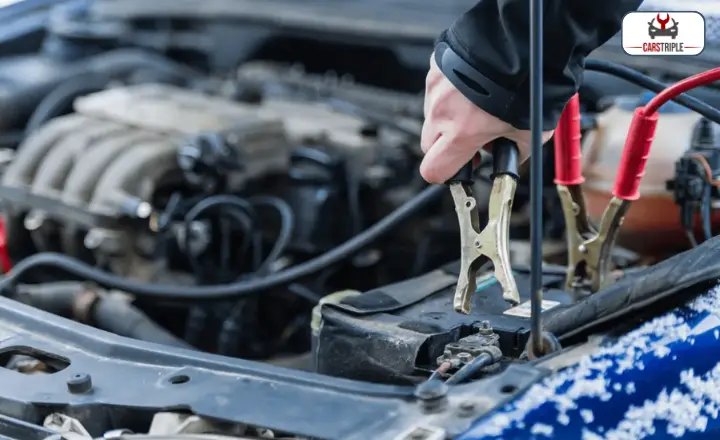
When your car has no power due to a dead or weak battery, it can be frustrating and inconvenient. In addition to regular maintenance checks on your vehicle’s electrical system and ensuring proper usage of electronics while the engine is off, investing in a reliable jumper cable or portable jump starter can provide peace of mind in case of emergencies.
Being proactive about monitoring your car’s battery health and taking precautions against unexpected failures will not only save you from potential inconveniences but also help maintain your vehicle in top condition for years to come.
2. Blown Fuses
Blown fuses can be a source of frustration and inconvenience, especially when they leave you stranded with a powerless car. Understanding the causes behind blown fuses is crucial to addressing this issue effectively.
Short circuits, for example, occur when a wire’s insulation breaks down, causing the current to flow through an unintended path and ultimately blowing the fuse. Sudden surges in electrical loads, such as using too many accessories at once or connecting high-powered devices, can overwhelm the fuse’s capacity and lead to failure.
Age-related wear and tear is often an overlooked factor contributing to blown fuses. Over time, corrosion and degradation can weaken the integrity of the fuse connections or the surrounding wiring system. This makes it important to regularly inspect and replace aging fuses before they lead to unexpected power loss in your car.
Understanding these underlying causes allows car owners to take proactive measures to prevent blown fuses. Proper electrical maintenance routines and periodic checks on all vehicle components can help mitigate potential risks related to blown fuses.
Investing in high-quality fuses designed for specific current loads and employing proper installation techniques may further safeguard against power disruptions due to blown fuses.
3. Faulty Alternator
If you’ve ever experienced dimming headlights, a constellation of dashboard warning lights, and the frustration of a dead battery, chances are your faulty alternator is at the root of it all.
The alternator is like the heart of your car’s electrical system, responsible for charging the battery and powering all sorts of components while the engine is running. When this crucial component starts to fail, it can manifest in a variety of symptoms that can leave you stranded or in need of an expensive tow.
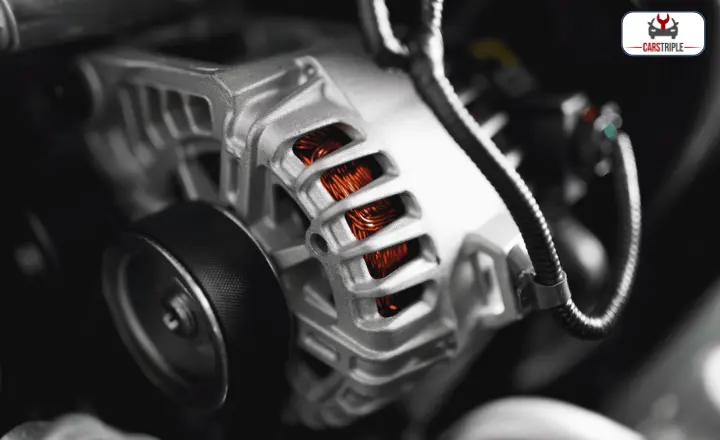
What makes the situation even more frustrating is that these issues tend to escalate over time, starting with subtle signs like flickering lights and ending with complete power failure. It’s essential to address any odd behavior in your car as soon as possible to prevent further damage and inconvenience.
So next time you’re left scratching your head over dimming lights and warning signals on your dashboard, remember: it might just be time for a closer look at that alternator—before it leaves you powerless on the side of the road.
4. Damaged Wiring or Connectors
If you’ve ever experienced the frustration of a car with no electrical power, you know how important it is to have the wiring and connectors in top condition. Damaged wiring or connectors can cause a wide range of issues, from intermittent power loss to complete failure. When these vital components are compromised, it’s crucial to address the problem promptly.
When damaged wiring or connectors are repaired or replaced, it’s not just about restoring electrical power; it’s about ensuring your safety on the road. Modern vehicles rely more than ever on a complex network of wires and connectors to operate essential functions such as airbags, ABS systems, and electronic stability control.
Taking care of damaged wires and connectors isn’t just a matter of convenience; it’s a priority for maintaining the overall reliability and functionality of your vehicle. Ignoring these problems can lead to costly repairs down the line and compromise your safety on the road. By addressing these issues promptly, you can rest assured that your vehicle will be running at its best for years to come.
5. Ignition Switch Failure
The frustration of your car suddenly losing power or dashboard lights flickering intermittently could be a sign of a faulty ignition switch. While these symptoms might initially seem minor, they can indicate a more serious underlying issue that requires attention.
Ignition switch failure can lead to unexpected stalling of the vehicle or difficulty in starting, which can be both inconvenient and potentially dangerous. One fresh perspective to consider is the impact of faulty ignition switches on overall vehicle safety.
Not only can an unreliable ignition switch lead to power loss while driving, but it can also affect critical systems such as airbags and anti-lock brakes. This broader scope highlights the potential risks associated with ignoring the early signs of ignition switch problems.
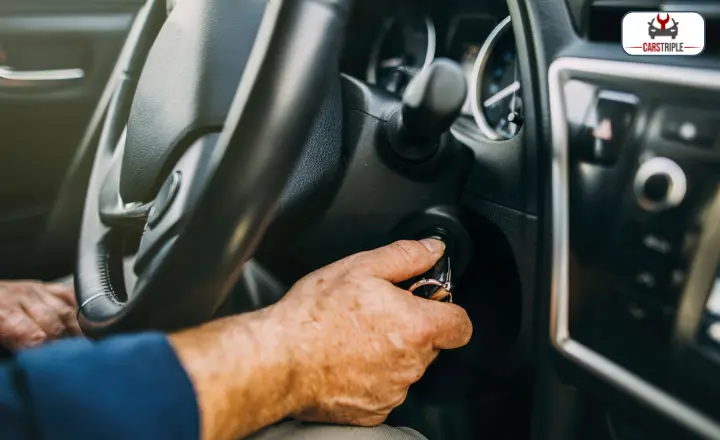
Understanding why your car has no power goes beyond simplicity; it delves into the intricate workings of automotive electrical systems. By recognizing and addressing the symptoms of a failing ignition switch early on, drivers can prevent more severe complications and ensure their safety on the road.
6. Malfunctioning Engine Control Module (ECM)
If you’ve ever experienced a situation where your car seems to have lost all power, it could very well be due to a malfunctioning Engine Control Module (ECM). This makes diagnosis much more challenging for mechanics and car owners alike. It’s like solving a complex puzzle without any clues, leaving many frustrated and puzzled by the lack of concrete answers.
The impact of a malfunctioning ECM goes beyond simply causing a loss of power in your vehicle. It can also affect fuel efficiency, emissions control, and overall engine performance.
Without proper diagnosis and timely intervention, this issue has the potential to snowball into an array of other costly problems. So if you find yourself scratching your head over why your car has no power, consider the possibility that the culprit might just be hidden within the intricate circuitry of your ECM.
How To Fix A Car That Has No Power
If your vehicle is completely lacking in power, it is crucial to methodically investigate and resolve the problem. The following are the necessary steps to be taken in such a situation:
Stay calm and ensure safety
Keeping calm and prioritizing safety is crucial when faced with a powerless car. By approaching the situation with clear thinking and taking the necessary precautions, you can effectively address the issue without compromising your well-being.
Remember that seeking assistance when needed is not a sign of weakness but rather a smart decision for ensuring both personal safety and resolving the problem efficiently.
Assess the symptoms
In addressing symptoms related to a lack of power in a car, one must also consider preventive maintenance as an integral part of long-term solutions. Regularly inspecting key components, such as spark plugs, filters, and belts, can help prevent potential failures that may lead to a loss of power.
Staying informed about the specific make and model of your vehicle can provide valuable insights into common issues associated with similar cars, allowing for proactive measures that ensure sustained performance without encountering frequent bouts of reduced power.
Check the battery
If you are consistently experiencing power issues with your car, it might be beneficial to have a professional mechanic perform a thorough inspection of your electrical system.
With their expertise and diagnostic tools, they can pinpoint any underlying problems beyond just checking the battery, ensuring that your car operates reliably on the road.
Inspect fuses
When your car experiences a total loss of power, the first thing to inspect is the fuse box. Often, a blown fuse can be the culprit behind this frustrating situation. Start by locating the fuse box, usually found under the hood or dashboard. Use the owner’s manual to identify which fuse corresponds to the malfunctioning component.
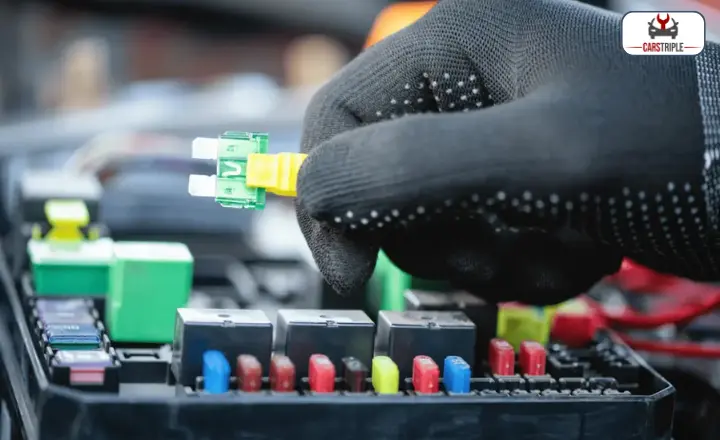
Once located, use a multimeter to test for continuity in each fuse. If you find a blown fuse, replace it with one of equal amperage and check if that restores power to your car.
If replacing fuses becomes a frequent occurrence, it may indicate an underlying electrical issue that requires professional diagnosis and repair. Understanding how to quickly and effectively inspect and replace fuses can save time and money when addressing power issues in your vehicle.
Check the alternator
When your car experiences a sudden loss of power, the alternator could be to blame. The alternator is responsible for charging the battery and powering electrical components while the engine is running. A worn-out alternator can result in a weak or completely dead battery, leaving you stranded with a car that won’t start.
To troubleshoot this issue, start by checking the alternator belt for signs of wear and adjusting its tension if necessary. Use a multimeter to test the voltage output from the alternator, ensuring it meets the manufacturer’s specifications.
If your vehicle continues to exhibit symptoms of power loss despite a functioning alternator, it’s vital to inspect related components such as the battery and starter. Corrosion on battery terminals or faulty connections can hinder electrical flow and result in similar issues. By meticulously assessing each element within the charging system, you can accurately diagnose and address any underlying problems causing your car’s power deficiency.
Inspect wiring and connectors
Ensuring that your car’s wiring and connectors are in top condition plays a vital role in maintaining its performance and reliability. By paying close attention to these components when troubleshooting power problems, you can avoid costly repairs down the road while keeping your vehicle running smoothly.
Always remember that meticulous inspection and maintenance of wiring and connectors are key steps in addressing power-related issues effectively.
Consider professional help
Consider professional help when you find yourself unable to fix a car that has no power. In some cases, the issue may be beyond your expertise and require specialized diagnostic equipment or technical knowledge that only a professional mechanic can provide.
Attempting DIY fixes without a sufficient understanding of the underlying problems could potentially cause further damage to the vehicle. Professional mechanics possess the skills and experience necessary to accurately diagnose and repair issues related to a car’s lack of power.
Their expertise can save you time, money, and frustration in the long run. Seeking professional help also ensures that any repairs are done correctly, reducing the risk of recurring problems down the line.
Regular maintenance
Regular maintenance is the key to keeping your vehicle running smoothly and efficiently. Neglecting routine maintenance can lead to a myriad of issues, one of which may be a lack of power.
When a car loses power, it could be due to a variety of factors, such as clogged air filters, worn-out spark plugs, or fuel system problems. Addressing these issues through regular maintenance can prevent them from escalating into more significant problems down the line.
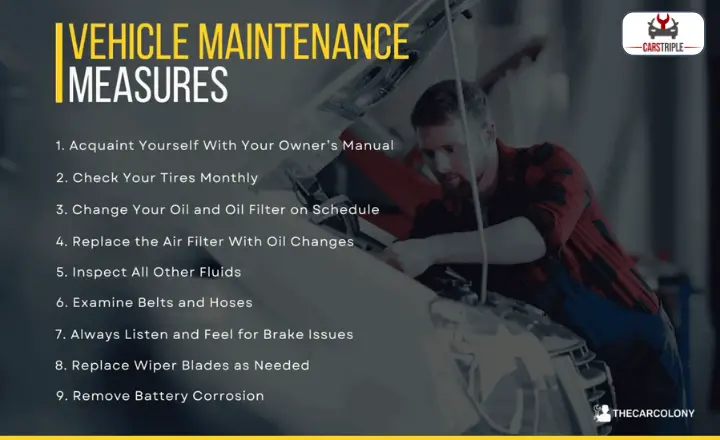
Maintaining engine health and regular upkeep also extends to other crucial components such as the transmission and brakes. By adhering to manufacturer-recommended service intervals, you can ensure that these parts remain in optimal condition, thereby avoiding performance issues such as sluggish acceleration or unresponsive braking.
Conclusion
As we have discussed above, The lack of power in your car can be caused by several factors, including issues with the engine, fuel system, or exhaust. It is important to regularly maintain and service your vehicle to prevent these problems from arising. By addressing any underlying issues promptly and seeking the help of a professional mechanic, you can ensure that your car runs smoothly and efficiently.
Remember to pay attention to any warning signs or changes in performance and address them immediately to avoid further damage. Taking proactive steps now can save you time and money in the long run, so don’t hesitate to seek assistance if you notice any power-related issues with your car.
FAQS
What could cause my car to lose power while driving?
Loss of power while driving can be caused by fuel pump problems, clogged air filters, or ignition system issues.
How do I know if my car’s lack of power is due to a faulty catalytic converter?
A malfunctioning catalytic converter can result in reduced engine performance and unusual exhaust emissions. A diagnostic test can confirm if it’s the culprit.
Are electrical problems a common cause of decreased engine power?
Electrical issues, such as faulty spark plugs or wiring problems, can contribute to a loss of engine power.
